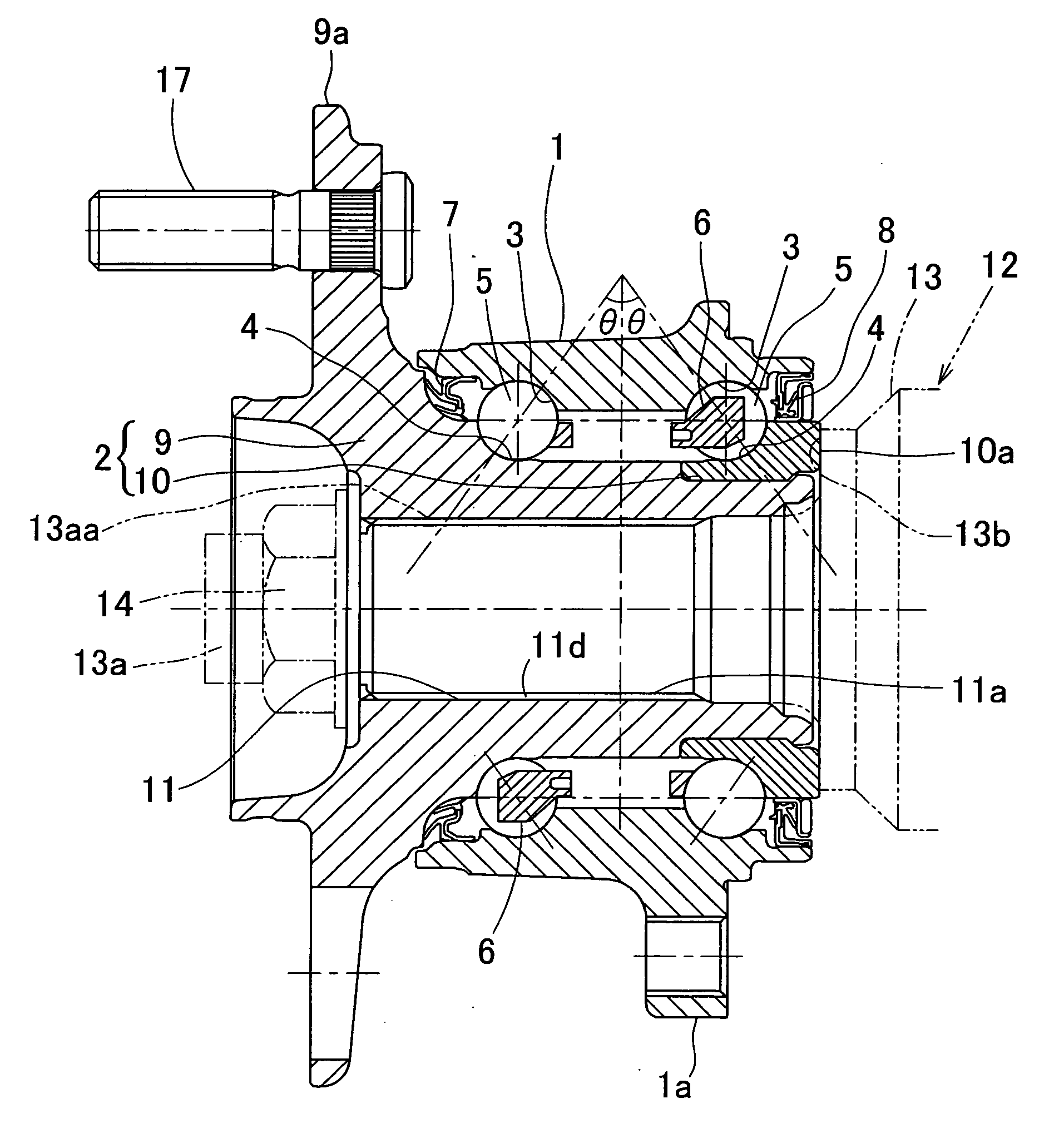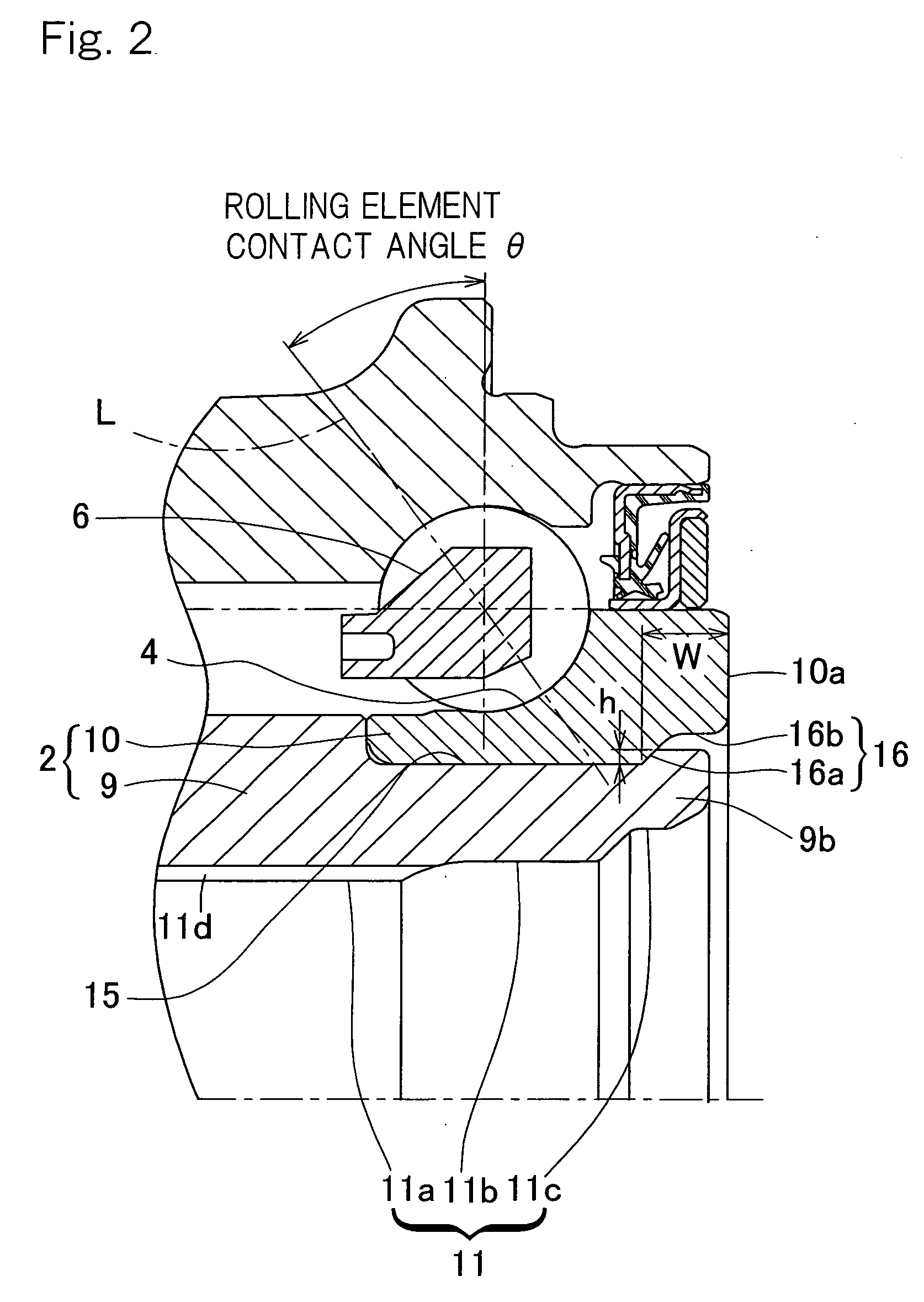Wheel Support Bearing Assembly and Method of Manufacturing the Same
a technology of bearing assembly and wheel support, which is applied in the direction of hubs, mechanical equipment, transportation and packaging, etc., can solve the problems of increasing contact pressure, increasing extra, and reducing the life of the bearing, so as to prevent the detachment of the inner race segment of the finished product, and easy and accurate transportation
- Summary
- Abstract
- Description
- Claims
- Application Information
AI Technical Summary
Benefits of technology
Problems solved by technology
Method used
Image
Examples
Embodiment Construction
[0061]A first preferred embodiment of the present invention will be described in detail with particular reference to FIGS. 1 to 3. This embodiment is applied to a wheel support bearing assembly for rotatably supporting a vehicle drive wheel, which is an inner race segment rotating model of a third generation type. It is to be noted that in the specification herein presented, the term “outboard” is intended to mean one side of an automotive vehicle body away from the longitudinal center of the automotive vehicle body, whereas the term “inboard” is intended to mean the opposite side of the automotive vehicle body close towards the longitudinal center of the automotive vehicle body.
[0062]The illustrated wheel support bearing assembly includes an outer member 1 having an inner periphery formed with a double row of raceway surfaces 3, an inner member 2 having raceway surfaces 4 formed therein and opposite to those raceway surfaces 3, and a double row of ball-shaped rolling elements 5 int...
PUM
| Property | Measurement | Unit |
|---|---|---|
| size | aaaaa | aaaaa |
| axial length | aaaaa | aaaaa |
| crimping force | aaaaa | aaaaa |
Abstract
Description
Claims
Application Information
 Login to View More
Login to View More - R&D
- Intellectual Property
- Life Sciences
- Materials
- Tech Scout
- Unparalleled Data Quality
- Higher Quality Content
- 60% Fewer Hallucinations
Browse by: Latest US Patents, China's latest patents, Technical Efficacy Thesaurus, Application Domain, Technology Topic, Popular Technical Reports.
© 2025 PatSnap. All rights reserved.Legal|Privacy policy|Modern Slavery Act Transparency Statement|Sitemap|About US| Contact US: help@patsnap.com



